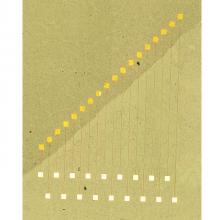
Dr. Ferdinand Harerimana (Lafayette College) will give a colloquium in the Physics Department on technological applications of graphene monolayers. This lecture is open to the campus community, but assumes at least 1-2 years of physics background coursework. Come early for cookies and coffee with the Physics Club, starting at 4:10 PM!
Title: Fabricating a Graphene Variable Capacitor on a Silicon Wafer and Measuring its Capacitance
Scanning tunneling microscopy, molecular dynamics simulations, and high-mobility transport studies have shown that freestanding graphene has constantly moving ripples. Over time, a ripple changes its shape from concave to convex and vice versa, suggesting that it possesses kinetic energy which can be harvested. In addition, graphene’s extreme flexibility opens the possibility of using it as a transducer for converting ambient vibrations to low-power electricity. For this reason, graphene-based devices have the potential to replace batteries in a variety of low-power sensor applications. In this talk, I will describe a process which my colleagues and I developed for fabricating a graphene variable capacitor (GVC) for energy-harvesting applications. First, a lithography tool is used to write a tip-well feature on a Si/SiO2 wafer. The sample is then etched in buffered oxide etch (BOE) to create a cone-shaped tip inside a 7-μm square-well, which terminates in a long trench. Finally, gold is deposited into the wafer in order to make conducting traces and contact pads. Atomic force microscopy (AFM) can then be used to determine the tip-to-surface distance, which allows one to predict the capacitance of the GVC. In the final stage of fabrication, the scotch-tape method is used to transfer graphene to a position above the tip region, and critical-point drying can be used suspend the graphene there. We successfully facbricated GVCs using this process and measured the tip-graphene capacitance over time, which we found to be on the order of 100 attofarads.


